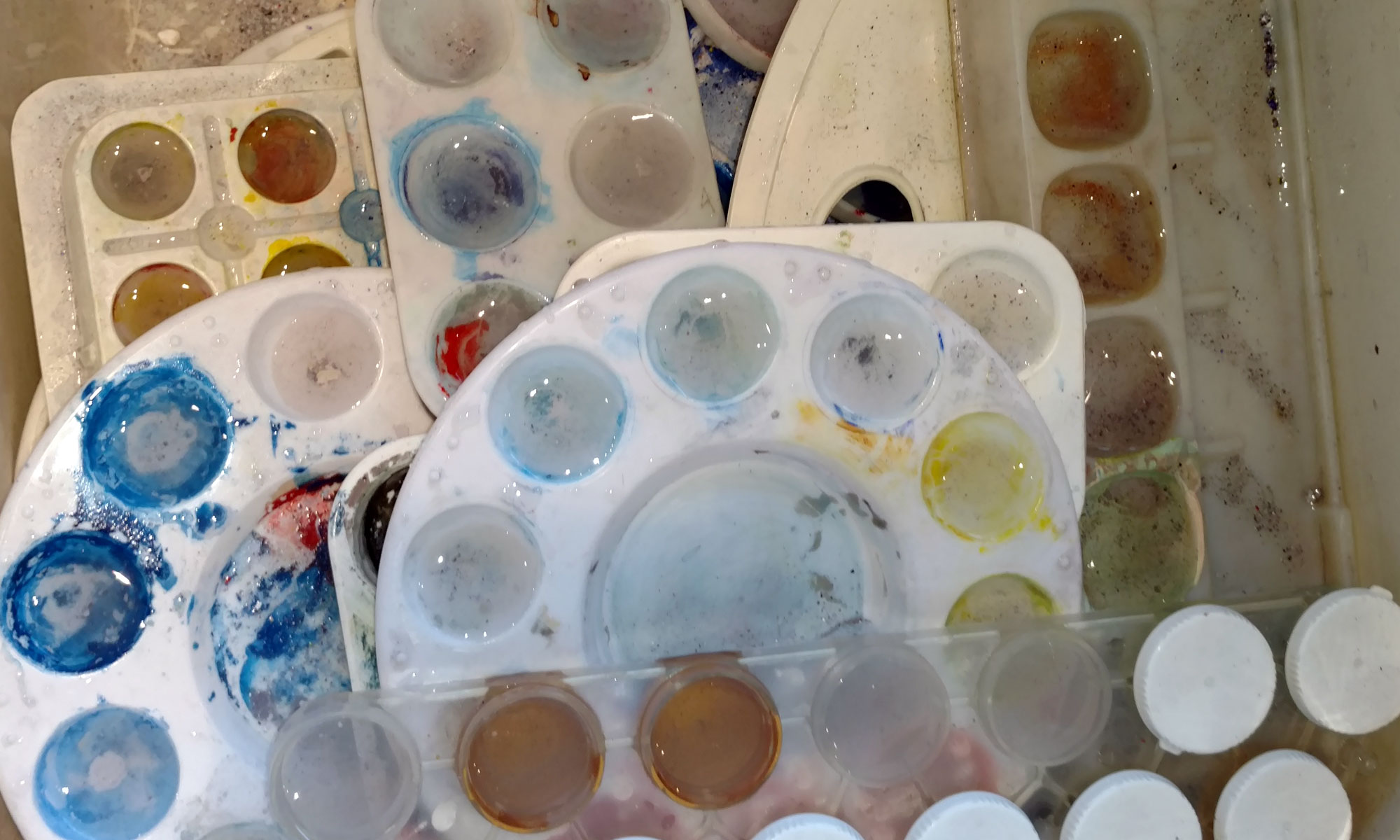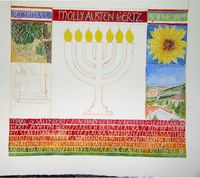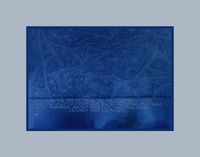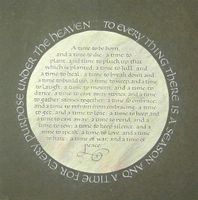
I’m still working on a re-do of the 1983 piece I mentioned 3 days ago. In the meantime, I remembered this 2000 piece, which is similar in layout — but more organic and less dynamic — to the 1983 piece.
More fun with Photoshop
If I really knew what I was doing in Photoshop, I could tell you how I did this. Something to do with the elliptical marquee, inverse selection and fill using a color from the camellia. I’m not sure why the fill didn’t get everything outside the marquee, but I like the effect.
Here’s the original photo, cropped approximately the same way.
Tulip Magnolia — this time without a border?
Tulip Magnolia
Camellia
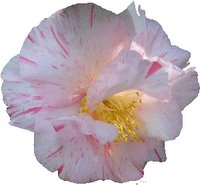 Everything is blooming here — the camellias, the tulip magnolias, and the azaleas. Here’s a double-bloom camellia that’s blooming by the front walk. I used the Magic Wand in Photoshop to get rid of the background. I know this is a basic procedure in Photoshop, but today I finally figured out the various parts of the Magic Wand, and made a GIF with a transparent background too. Well, it looked transparent before I uploaded it, anyway. Now it’s just a white background, instead of a transparent one.
Everything is blooming here — the camellias, the tulip magnolias, and the azaleas. Here’s a double-bloom camellia that’s blooming by the front walk. I used the Magic Wand in Photoshop to get rid of the background. I know this is a basic procedure in Photoshop, but today I finally figured out the various parts of the Magic Wand, and made a GIF with a transparent background too. Well, it looked transparent before I uploaded it, anyway. Now it’s just a white background, instead of a transparent one.
Here’s the original photo, cropped a little.
Scribbler to Scribe: Part 1
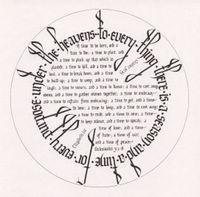
This week the latest issue of Letter Arts Review arrived in my mailbox. (I was on my way to the gym when I got the mail, so those 45 minutes on the elliptical machine just flew by.) I was especially interested in the new series article, “Scribbler to Scribe”. In this first article, Glen Epstein and Gwen Weaver remembered the beginning impulses that led to their years of calligraphy. There were three images for each of them: a recent piece of calligraphy, a beginning piece of calligraphy, and a picture of the scribbler about the time the early calligraphy was done.
So I got to thinking. And yesterday I started a new version of Ecclesiastes 3:1-8, the text of one of the first finished pieces I ever did, back in 1983. I’ll be interested to see the 1983 version next to the 2006 version. Here’s the 1983 version.
I look at this piece and think – hey, not too bad for a beginner. But it’s clear that even as a beginner I was willing to go through some torture to get the results I want: the copy fitting for this piece had to have been really time-consuming. By contrast, this time around I used the computer to help with the layout. I wrote out the main text in a regular block of text, then scanned it in. Then in Photoshop Elements I created a circle shape and cut and pasted the bits of text until the circle worked. (I’m leaving out those lovely wooden swashes this time around.)
In the middle of the Molly piece
Click on the thumbnail for a closer look.
Here’s where I am right now on it. And it’s about this point in a piece that I generally wonder whether I’m just masochistic or what. I mean, why decide to do all the lines in frisket? What was I thinking?? It’s like trying to write with a rubber band that keeps stretching and breaking. And the pen has be cleaned every 2 or 3 minutes. But the white lines are the unifying style of the piece, which is what was lacking on the previous 7 attempts.
And then I do the washes and I have to leave the studio to avoid messing with it too soon — I want to see what it “really” looks like with the frisket off.
That actually why I’m posting this right now, to try to avoid put the color on the grapes too soon …
Working draft – the Molly piece
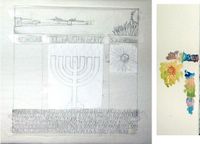
Click on the thumbnail for a closer look.
Well, the end-of-year chores are done, my shoulder is healing nicely, and I’m finally back to working on calligraphy. It’s nice to be back.
I’m currently working on a long overdue gift commemorating a trip made back in summer of 2004. I’ve been working on it all week. I’ve started this piece about 8 times, and always the basic design was too flawed to continue, but now I’ve got something that will work. It will be done tomorrow.
